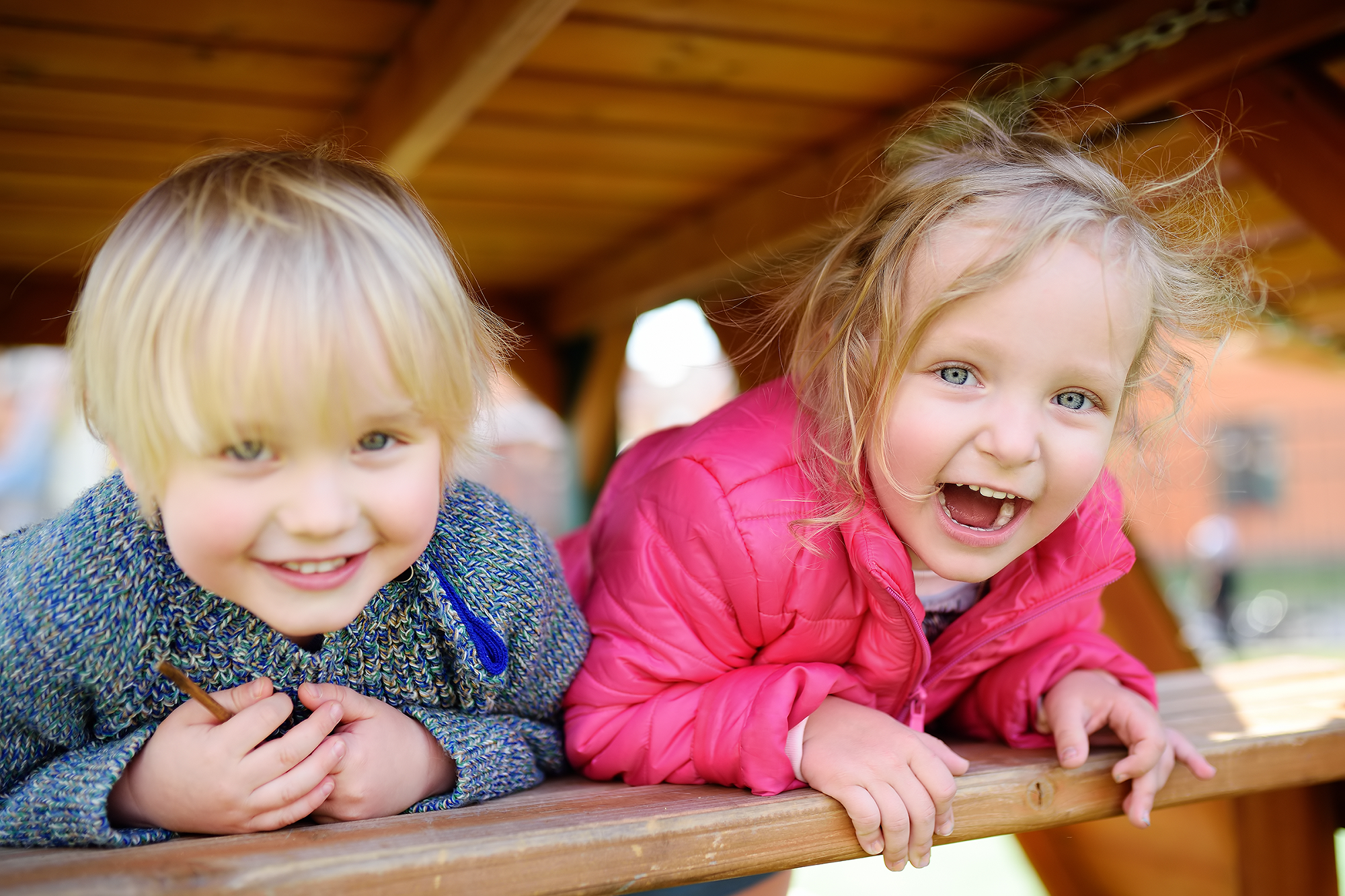
What influences healthy brain development in children?
What influences healthy brain development in children?

In a child’s early years, the brain forms over a million new neural connections every second: a pace unmatched at any other stage of life.[1] Between birth and six years of age, many aspects of growth and development take place very quickly.
This period of high plasticity lays the foundation for learning, memory, and emotional resilience.
Nutrition, sleep, caregiving, play, and other forms of stimulation all shape brain development, and can have lasting effects on cognitive function and emotional wellbeing.
Here’s a brief overview of how a child’s brain develops and what the science says about key contributors.
Brain development from birth
Brain development begins in the womb and continues rapidly through early childhood. Grey matter grows rapidly after birth via synaptogenesis (the formation of synapses), peaking around ages two to three.[2] This is followed by synaptic pruning, in which the brain eliminates unnecessary connections to optimise neural circuitry.
Meanwhile, white matter strengthens through myelination, which enhances communication between different brain areas. While much of this activity is concentrated in early life, some regions like the hippocampus – the area of the brain involved in learning and memory – continue to mature well into adolescence and adulthood.[3]
Nutrition during early childhood
The human brain relies on the full spectrum of essential nutrients to form and function properly. Macronutrients such as protein and healthy fats support the formation of neural tissue, while specific micronutrients – iron, zinc, choline, iodine, folate, and B12 – contribute to myelination, neurotransmitter production, and synaptic plasticity.[4]
Long-chain omega-3 fatty acids – DHA – is fundamental to the formation and function of the central nervous system and the retina.[5]
Environmental stimulation
Sensory stimulation plays a key role in shaping neural circuits. As babies interact with objects, people, and sounds, their brains begin to recognise cause-and-effect relationships and build the foundations of memory, language, and problem-solving.[6]
As children grow, play can help to drive cognitive development. Puzzle games can support spatial reasoning and problem-solving skills, while memory games reinforce attention and cognitive flexibility.[7] Role-playing games – such as pretending to be a teacher or a chef – have been linked to enhanced empathy, self-regulation, and abstract thinking, all of which reflect healthy frontal lobe development (the area involved in emotions and moral decision-making).[8]
Attachment and caregiving
Affectionate touch plays a unique and vital role in infant development, and different nerve endings in the skin respond to different types of contact. Gentle, affectionate touch is shown to activate slower, unmyelinated nerve fibres, which can promote positive emotions, as well as regulating stress reactivity and promoting mother–infant bonding.[9]
Gentle touch such as stroking may also help build the brain circuits involved in cognitive and social development later in life. Studies suggest that infants who receive regular skin-to-skin contact show brain patterns linked to emotional and cognitive growth. Pre-term babies who receive this kind of contact are shown to have faster brain maturation and stronger connectivity.[10]
Healthy sleep patterns
Sleep plays a key role in brain development, particularly rapid eye movement (REM) sleep. In early life, REM sleep supports neuroplasticity and the pruning of neural connections, both critical for learning and memory. In newborns, REM can account for up to 50% of total sleep, gradually decreasing as the brain matures.[11]
Research in young animals shows that REM sleep supports newly formed brain connections, while disrupted sleep may interfere with this process. One study found that children who miss a nap may find it harder to retain new information, even if they get plenty of sleep in the days that follow. This highlights the value of healthy sleep patterns for memory consolidation in early childhood.[12]
The impact of technology
Digital technology can have both positive and negative influences on children’s brain development. Certain educational apps and games (such as ‘Math Blaster’) require children to apply critical thinking and problem-solving skills. For older children, multiplayer games such as “World of Warcraft” involve collaborating with others and developing strategies to achieve different outcomes, which can improve social cognition and cooperative problem-solving skills.[13]
However, excessive screen time in young children has been linked to slower development in areas such as language and emotional regulation.[14]
A large study of children aged between two and 17 years found that more than an hour of daily screen time was associated with reduced curiosity, lower self-control, and difficulties with attention and peer interaction.[15]
Every child develops in their own way, and there’s no single formula or ‘best’ way to support their growth. But understanding the factors that shape their young minds can contribute to their learning, emotional resilience, and lifelong wellbeing.
This information is provided for educational purposes only and is not a substitute for professional medical advice. Always seek the guidance of your physician or qualified healthcare provider with any questions you may have regarding your health or a medical condition.
References
[1] Thompson RA. Early brain development and public health. Delaware J Public Health. 2024;10(3). PMCID: PMC11526699 [PMID: 39493243] doi:10.32481/djph.2024.10.03
[2] Na X, Mackean PP, Cape GA, Johnson JW, Ou X. Maternal nutrition during pregnancy and offspring brain development: insights from neuroimaging. Nutrients. 2024;16(19):3337. doi:10.3390/nu16193337
[3] National Research Council (US), Institute of Medicine (US) Committee on Integrating the Science of Early Childhood Development; Shonkoff JP, Phillips DA, editors. From Neurons to Neighborhoods: The Science of Early Childhood Development. Washington (DC): National Academies Press (US); 2000. Available from: https://www.ncbi.nlm.nih.gov/books/NBK225562/
[4] Georgieff MK, Ramel SE, Cusick SE. Nutritional influences on brain development. Acta Paediatr. 2018;107(8):1310–1321. PMCID: PMC6045434 [PMID: 29468731] doi:10.1111/apa.14287
[5] Roberts M, Tolar-Peterson T, Reynolds A, Wall C, Reeder N, Rico Mendez G. The effects of nutritional interventions on the cognitive development of preschool-age children: a systematic review. Nutrients. 2022;14(5):1003. PMCID: PMC8839299 [PMID: 35276891] doi:10.3390/nu14051003
[6] Malik F, Marwaha R. Cognitive development. In: StatPearls [Internet]. Treasure Island (FL): StatPearls Publishing; 2025 Jan–. Available from: https://www.ncbi.nlm.nih.gov/books/NBK519523/
[7] Gümüşdağ, H. (2019). Effects of pre-school play on motor development in children. Universal Journal of Educational Research, 7(2), 580–587. https://doi.org/10.13189/ujer.2019.070231
[8] Hashmi, S., Vanderwert, R. E., Price, H. A., & Gerson, S. A. (2020). Exploring the Benefits of Doll Play Through Neuroscience. Frontiers in human neuroscience, 14, 560176. https://doi.org/10.3389/fnhum.2020.560176
[9] La Rosa, V. L., Geraci, A., Iacono, A., & Commodari, E. (2024). Affective Touch in Preterm Infant Development: Neurobiological Mechanisms and Implications for Child-Caregiver Attachment and Neonatal Care. Children (Basel, Switzerland), 11(11), 1407. https://doi.org/10.3390/children11111407
[10] Lilliesköld, S., Lode-Kolz, K., Rettedal, S., Lindstedt, J., Linnér, A., Markhus Pike, H., Ahlqvist-Björkroth, S., Ådén, U., & Jonas, W. (2023). Skin-to-Skin Contact at Birth for Very Preterm Infants and Mother-Infant Interaction Quality at 4 Months: A Secondary Analysis of the IPISTOSS Randomized Clinical Trial. JAMA network open, 6(11), e2344469. https://doi.org/10.1001/jamanetworkopen.2023.44469
[11] Primary role of sleep changes in early childhood | American Association for the Advancement of Science (AAAS). (n.d.). American Association for the Advancement of Science (AAAS). https://www.aaas.org/news/primary-role-sleep-changes-early-childhood
[12] Seehagen, S., Konrad, C., Herbert, J. S., & Schneider, S. (2015). Timely sleep facilitates declarative memory consolidation in infants. Proceedings of the National Academy of Sciences of the United States of America, 112(5), 1625–1629. https://doi.org/10.1073/pnas.1414000112
[13] Jordan, T. (2009). The Ecology of Games: Connecting youth, games and learning. Information Communication & Society, 12(2), 291–293. https://doi.org/10.1080/13691180802552890
[14] l Hosani, S.S., Darwish, E.A., Ayanikalath, S. et al. Screen time and speech and language delay in children aged 12–48 months in UAE: a case–control study. Middle East Curr Psychiatry 30, 47 (2023). https://doi.org/10.1186/s43045-023-00318-0
[15] Twenge, J. M., & Campbell, W. K. (2018). Associations between screen time and lower psychological well-being among children and adolescents: Evidence from a population-based study. Preventive medicine reports, 12, 271–283. https://doi.org/10.1016/j.pmedr.2018.10.003




